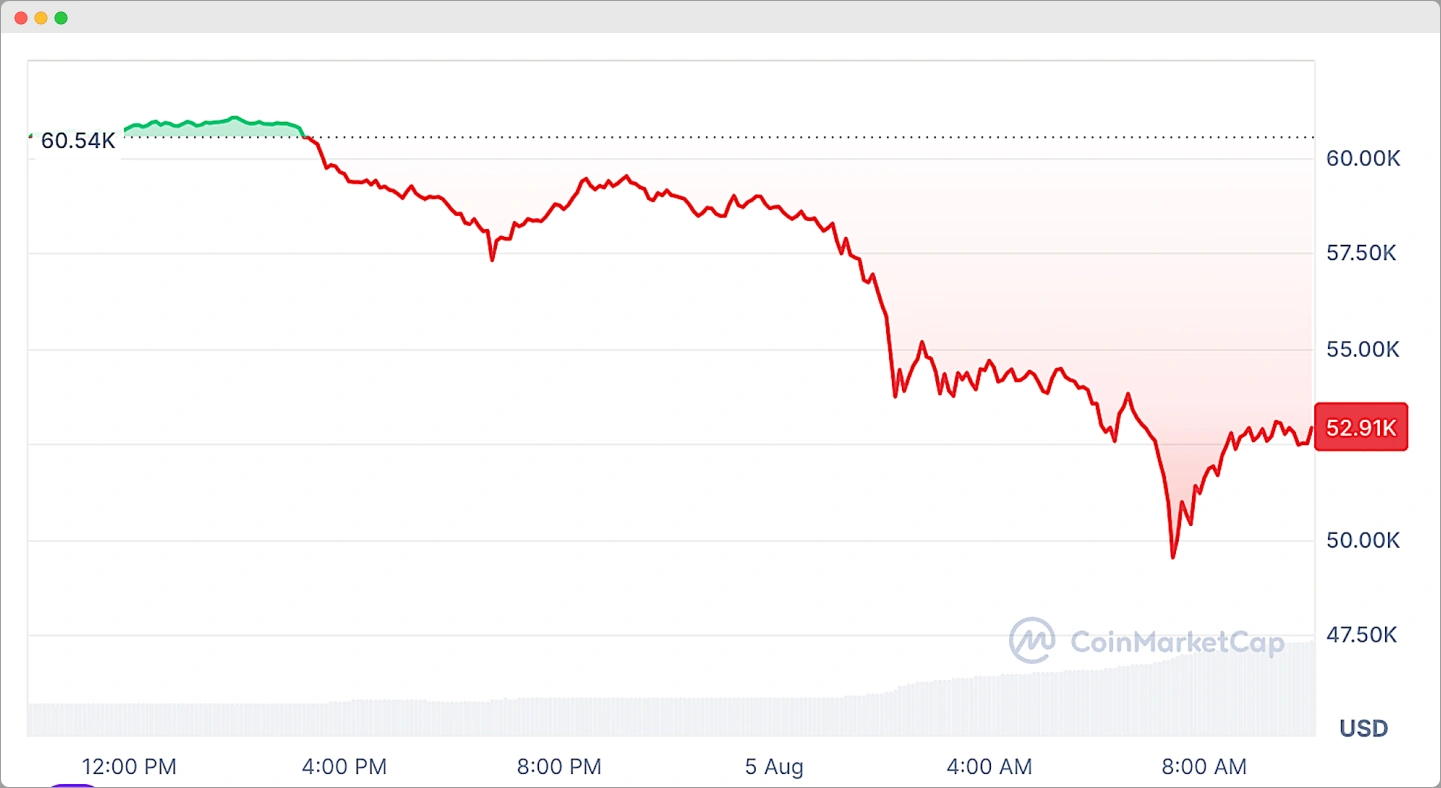What is a Crypto Trading Bot?
The rise of automated solutions in financial markets has transformed how investors trade. What is Crypto Trading Bot?
In essence, it is a computer program designed to buy and sell digital assets according to specific rules.
While bot for trading crypto tools are often employed by seasoned traders to implement algorithmic strategies, anyone with sufficient know-how (and caution) can use them.
A trading bot for crypto can operate around the clock, aiming to capitalize on market movements.
However, it also entails unique risks—ranging from coding errors to potential scams.
Understanding the fundamentals of these tools is critical before deciding whether to integrate a cryptocurrency trading bot into your investment approach.
Key Takeaways:
Show
What is Crypto Trading Bot?

What is Crypto Trading Bot? Simply put, it is an automated algorithmic program that executes trades in the digital asset space on a user’s behalf.
While human, especially a day traders can only monitor markets for so long before fatigue sets in, bots can run continuously.
By connecting to cryptocurrency exchanges via an API (Application Programming Interface), these programs analyze price movements, apply pre-established rules, and place buy or sell orders at any time of day or night.
Historically, stock traders relied on paper slips, telephones, and human intermediaries to facilitate transactions.
Over time, technology revolutionized trading through computerization, leading to the emergence of robo-advisors in 2008.
This evolution naturally extended into the crypto markets, where programmable software tools, or “bots,” automate rule-based strategies.
Some advanced users craft their own bots to exploit market inefficiencies, while others rely on third-party offerings such as Bitsgap, Coinrule, 3Commas, and Cryptohopper.
How do Crypto Trading Bots Work?
Crypto trading bots function as software systems that interpret market indicators and execute trades automatically. To do this, they require two main components: inputs and outputs.
1. Inputs:
Bots gather data—often large volumes—from exchanges and market data providers. They can incorporate technical indicators like moving averages (MAs), relative strength index (RSI), and more elaborate signals.
These metrics help the bot identify favorable conditions aligned with the user’s strategy. APIs are what link the bot’s software to the exchange, enabling seamless data collection.
2. Outputs:
Based on the analysis of inputs, bots proceed to place trades. Instead of manually logging into an exchange, a user grants the bot API access, defining what it can do—whether it’s allowed only to place trades or also withdraw funds.
Once market criteria match the trader’s predefined rules, the bot executes the order. Speed is a distinct advantage here: cryptocurrency trading bot tools can rapidly react to price swings, often faster than any human could.
3. Consideration
However, while automation can be beneficial, it also comes with responsibilities. Traders must frequently update their bot’s parameters and recheck strategies.
Overreliance on a misconfigured system or an outdated strategy can lead to unintended outcomes and losses.
Given that bots have direct access to user accounts, ensuring you trust the bot’s developer is paramount.
Types of Bots in Crypto Trading

Crypto trading bots are available in various forms, each targeting different market inefficiencies or strategies.
Among the most notable is the arbitrage bot, which identifies price differences across exchanges and seeks to lock in profits.
Because cryptocurrency rates can vary slightly between platforms, a swift bot might “beat” slower exchanges to capture a spread.
1. Top Non-all-inclusive Bot
The cryptocurrency ecosystem features multiple bot types, many of which cater to specific philosophies or conditions:
- Trend trading
- Arbitrage
- Coin lending
- Market making
- MACD (moving average convergence divergence)
- Automated trading
- Dollar-cost averaging
- Semi-automated
- Artificial Intelligence trading
- Grid bots
Some strategies rely on historical price data to simulate hypothetical trades, helping traders refine their approach before going live.
Others react to signals like volume spikes or specific price thresholds. Regardless of their design, bots remain dependent on the user’s coding prowess or the capabilities of the third-party platform that developed them.
2. Popular Crypto Trading Bots
Though advanced traders might develop custom bots, many turn to established services with user-friendly interfaces:
Cryptohopper:
A subscription-based, cloud-operated platform that offers a seven-day free trial. Users can integrate their own rules or subscribe to “external signals” for more hands-off operation. It accommodates multiple crypto trading strategies and indicators.
Coinrule:
Providing over 200 ready-to-use trading strategy templates, Coinrule allows a risk-free demo mode for testing.
Plans range from free to premium, each unlocking additional features. Its coin scanner tracks price movements across 2,000+ digital assets.
3Commas:
Known for customizable automation, 3Commas supports a broad spectrum of market conditions.
Subscribers can build strategies from the ground up or copy successful traders’ designs. Its tiered subscription model also includes a free plan for beginner traders.
Unibot:
Differing from typical browser-based bots, Unibot runs on Telegram. It facilitates near-instant trades on Uniswap v3, while its native token (UNIBOT) grants holders perks like lower fees.
Users can maintain several wallets, copy other traders’ transactions, and pounce on freshly launched tokens.
Pros and Cons of the using Crypto Trading Bots

| Pros | Cons |
|---|---|
| Tracks multiple markets simultaneously | Requires technical knowledge (coding, trading strategy) |
| Operates non-stop | Only as effective as the parameters set |
| Removes emotional bias in trading | Strategies can become outdated in volatile markets |
| More consistent adherence to a trading plan | Security risks (malicious code, platform vulnerabilities) |
| Faster execution and trade accuracy | Lack of adaptive thinking in unexpected market changes |
| Well-suited for crypto’s 24/7 market | May continue executing trades based on outdated rules |
Final Thought
A trading bot for crypto can be an excellent asset for those comfortable with coding, backtesting, and strategy optimization.
By automating routine tasks, a cryptocurrency trading bot can seize opportunities around the clock without succumbing to human emotional errors.
Nonetheless, success depends on thorough preparation—coding and testing a robust system, periodically reassessing its performance, and staying vigilant about market evolution.
No bot is inherently a money-making machine; it’s merely a tool that follows your instructions.
If your plan is sound and your software secure, you might experience gains. However, inattentiveness or reliance on an unvetted third-party system could do more harm than good.
Before committing funds to any bot for trading crypto, be sure to research thoroughly, remain realistic about potential outcomes, and uphold best security practices.
Frequently Asked Questions (FAQs)
Are crypto trading bots profitable?
Crypto trading bots can be profitable, but success depends on:
- Market conditions – Bots work best in highly liquid markets.
- Strategy configuration – Poorly set bots can lose money.
- Monitoring & adjustments – Regular tuning is required for optimal performance.
No bot guarantees profit, and many traders still lose money due to unpredictable market movements.
Which bot is best for crypto trading?
Some of the best crypto trading bots include:
- 3Commas – Offers automated trading strategies and portfolio management.
- Cryptohopper – Beginner-friendly with AI-powered features.
- Pionex – Built-in bots with low trading fees.
- Bitsgap – Known for arbitrage trading and bot automation.
- Gunbot – Customizable strategies for experienced traders.
Are crypto trading bots legal?
Yes, crypto trading bots are legal in most countries, provided they operate on regulated exchanges. However, using bots for market manipulation (e.g., wash trading) is illegal.
How risky are trading bots?
Trading bots come with risks such as:
- Market volatility – Bots can amplify losses if the market moves unpredictably.
- Software failures – Bugs or glitches can lead to unintended trades.
- Scams – Some bots promise unrealistic profits and are fraudulent.
- Over-reliance – Bots still require human monitoring and strategy adjustments.
Which trading bot is best for beginners?
For beginners, the best trading bots are:
- Pionex – Free built-in bots with easy setup.
- Cryptohopper – AI-assisted trading with copy-trading options.
- 3Commas – Simple automated strategies for learning bot trading.
Which broker allows bot trading?
Many brokers and exchanges support bot trading, including:
- Binance
- Coinbase Pro
- Kraken
- KuCoin
- Bybit
What is the most successful trading bot?
There is no universally “most successful” bot since profitability depends on strategy and market conditions. However, bots like 3Commas, Cryptohopper, and Pionex are widely used and have a track record of successful trades.
How much do trading bots cost?
The cost of trading bots varies:
- Free – Some platforms like Pionex offer free built-in bots.
- Subscription-based – Ranges from $10 to $100 per month (e.g., 3Commas, Cryptohopper).
- One-time purchase – Some bots charge $200 to $1,000+ for lifetime access (e.g., Gunbot).
Some bots also take a percentage of profits or require API integration fees.

